

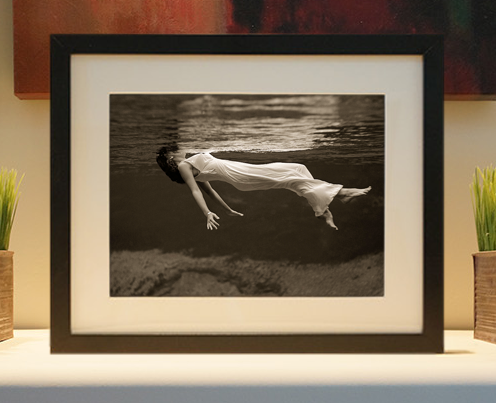
Framed or unframed, desk size to sofa size, printed by us in Arizona and Alabama since 2007. Explore now.
Shorpy is funded by you. Patreon contributors get an ad-free experience.
Learn more.

- The most dangerous fire escape I've ever seen
- Out of Place
- Sir Bedevere
- Witch way to the fire?
- Proud to be an old Coot
- That old scale
- Bowled Over
- Cat years?
- 'Why' Wyoming?
- His Master's Voice
- What! No dish under the skewer?
- Only in Hollywood?
- What's Up Doc?
- Destination?
- I'm pretty sure this was a voluntary program
- When I see chicken wire rabbit cages I think of three things
- The War Ears
- Eating the bunnies? Really?
- A love affair with a machine
- Hasenpfeffer
- Back support
- Hot type!
- Can you smell ... the news?
- Looking across the street and Flong
- Memories of my elderly hoarder neighbor
- Linotype in the Twilight Zone
- By Memory?
- Quiet place
- Line Of Type
- And no hearing protection
Printporium
Lake George: 1904

Warren County, New York, circa 1904. "Main street (Canada Street) in village of Lake George." 8x10 inch dry plate glass negative, Detroit Photographic Company. View full size.
Street railroad track structure
While street railways carried a lighter load per axle, the track structure needed to be stable. Any work on the track required a lot of digging to get at the underlying problem, so getting it right from the outset kept that to a minimum. You can imagine the city engineer did not want to be resurfacing the roadway and tracks from things like frost heaving.
Most urban systems used a rail with a cast-in flange to minimize pavement damage. This section allowed paving from macadam to Belgian blocks to fit up to the rail without the flanges breaking the edges of the road surface.
Pretty much the same
Streetcar tracks and railroad tracks, in most instances, are much the same, except that since streetcars are not as heavy, lighter but taller rails and more widely spaced ties can be used. Often a rail with a grooved head is used, to protect the wheel flanges from being chipped by loose paving stones. Here's a common streetcar railhead design:
Tracks and Rails
This is a question for the railfans, I guess:
Is there a similar construction of thick wooden planks and ballast underneath that layer of compressed dirt like we know it from steam locomotives ?? If not, what made these rails stay in place and at the surface ???
A streetcar carrying 50 people is not as heavy as a train, but with only four (single axle) or eight (double-bogie) very tiny points of contact under its steel wheels, the pressure onto these rails is still very high, so one should expect them to be going deeper into the ground over a extended period of time.
And could a real steam locomotive & a streetcar use each other's tracks or would they be too narrow / too wide ???
The Heimlake Maneuver
Some swallowing! I don't think DFP need lower his head in shame: Yes, Lake Okeechobee has a large surface area, but -- much like his guest's observation -- it's incredibly shallow (the respective volumes are 1.0 and 0.6 cubic miles). The moral here is clear: It's not just how big around you are, but also how deep you go.
Fetid Puddle
I grew up in New York and have been to Lake George. Currently I live about an hour and half from Lake Okeechobee. It's the eighth largest lake in the U.S. It is also extremely shallow, with an average depth of only about 8 feet. The lake suffers from frequent algae blooms caused by poorly regulated agricultural runoff and other pollution which makes it unhealthy for aquatic recreation and fishing. It is also home to an estimated 30,000 alligators. Not too many people go swimming there.
I will take Lake George.
In the eye of the beholder
Lake George, nicknamed the Queen of American Lakes, is beautiful. But not everyone appreciates it. When I lived in upstate NY some co-workers were visiting from the South, and I took them to see the lake and have dinner. We came over a hill at exactly the right moment. Sunset was skipping light across the blue water and then cascading up a green mountainside. A Mississippi-style paddleboat was midway across the lake. It was beautiful. Then, a co-worker from Florida asked me how big is Lake George? I said I didn't know. To which he replied, "Lake Okeechobee could swallow this lake up, whole." I guess it could.









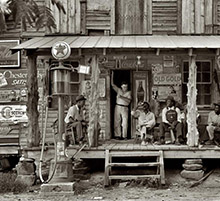
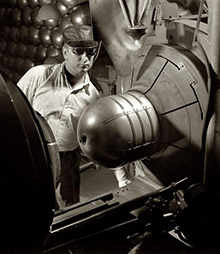
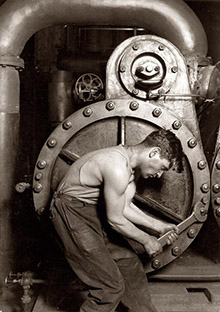

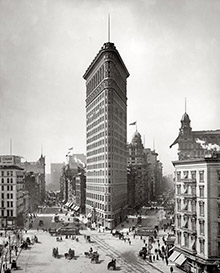


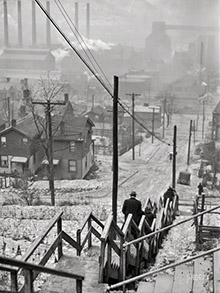
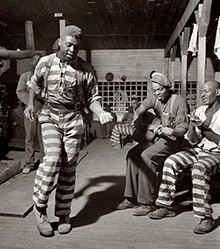


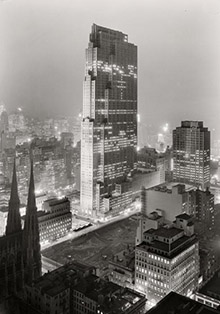

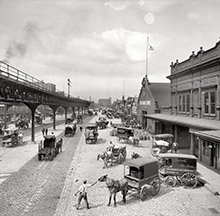

On Shorpy:
Today’s Top 5